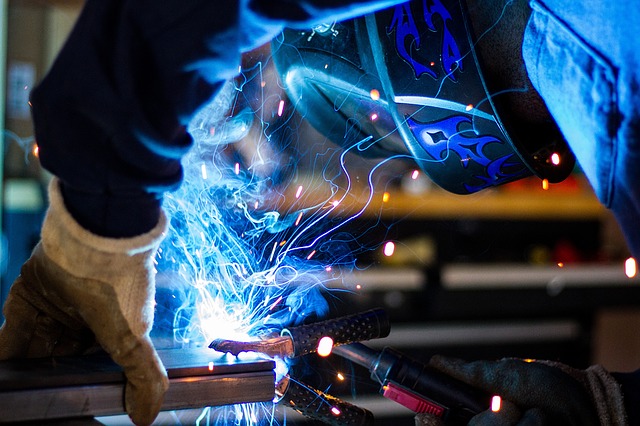Welding
Welding is a technique that can be used to join metallic components through the application of heat. It produces a secure and strong joint by combining two metals into one rather than other processes such as brazing and soldering that bond the pieces together.
Welded joints must be carefully designed with the expected forces, and the type and magnitude of the loads to which it will be subject in mind. The type of joint required – whether butt, lap, T, corner or edge – will determine the type of welding process.
Pressure welding involves applying external pressure to produce joints at temperatures either above or below the melting point. This technique is typically used on highly-ductile metals or those that become more ductile with the application of increasing heat. The two metallic components must be very clean and free of oxides to ensure the strongest possible joint. Some of the most common pressure welding processes include:
- Induction welding: For pipes.
- Inertial welding: For high-strength alloys.
- Cold pressure welding: For creating joints between sheets, wires, and so on.
- Explosive (or percussion) welding: For joints between dissimilar metals.
- Ultrasonic welding: For thin sheets.
- Friction welding: For joints between similar metals.
Fusion welding involves heating the edges of the metal components to above the melting point. No external pressure is used and a filler metal may or may not be used, as may inert gases be used, which can enhance the quality of the weld. Once the fused weld pool has solidified, the welded joint is complete. Suitable metals for fusion welding are those that are, to a certain level, mutually soluble in a solid state.
Welding operatives must be equipped with welding gloves, suitable eye protection, and a fire extinguisher. Sparks can be produced when welding, and so the area around the activity must be kept clear of flammable items.
[edit] Related articles on Designing Buildings Wiki
- Adhesive.
- Bolt.
- Cable tie.
- Clamp
- Cramp.
- Failure of metals.
- Industrial fasteners market.
- Inspections focus on occupational lung disease.
- Nut.
- Major cast metal components.
- Metal fabrication.
- Rebar.
- Safe2Torch.
- Screw.
- Soldering.
- Structural steelwork.
- The importance of welding assurance.
- Types of fixings.
- Washer.
- Welding consumables.
- Welding equipment market.
- Welding products market.
Featured articles and news
The Architectural Technology Awards
The AT Awards 2025 are open for entries!
ECA Blueprint for Electrification
The 'mosaic of interconnected challenges' and how to deliver the UK’s Transition to Clean Power.
Grenfell Tower Principal Contractor Award notice
Tower repair and maintenance contractor announced as demolition contractor.
Passivhaus social homes benefit from heat pump service
Sixteen new homes designed and built to achieve Passivhaus constructed in Dumfries & Galloway.
CABE Publishes Results of 2025 Building Control Survey
Concern over lack of understanding of how roles have changed since the introduction of the BSA 2022.
British Architectural Sculpture 1851-1951
A rich heritage of decorative and figurative sculpture. Book review.
A programme to tackle the lack of diversity.
Independent Building Control review panel
Five members of the newly established, Grenfell Tower Inquiry recommended, panel appointed.
Welsh Recharging Electrical Skills Charter progresses
ECA progressing on the ‘asks’ of the Recharging Electrical Skills Charter at the Senedd in Wales.
A brief history from 1890s to 2020s.
CIOB and CORBON combine forces
To elevate professional standards in Nigeria’s construction industry.
Amendment to the GB Energy Bill welcomed by ECA
Move prevents nationally-owned energy company from investing in solar panels produced by modern slavery.
Gregor Harvie argues that AI is state-sanctioned theft of IP.
Heat pumps, vehicle chargers and heating appliances must be sold with smart functionality.
Experimental AI housing target help for councils
Experimental AI could help councils meet housing targets by digitising records.
New-style degrees set for reformed ARB accreditation
Following the ARB Tomorrow's Architects competency outcomes for Architects.
BSRIA Occupant Wellbeing survey BOW
Occupant satisfaction and wellbeing tool inc. physical environment, indoor facilities, functionality and accessibility.
























